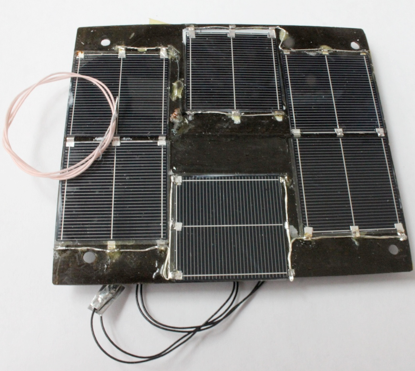Physical-technical principles of the constructional and technological solutions on the thin-film nanocrystalline silicon solar cells and heterojunction А3В5 solar cells
Integrated optimization of production technology of radiation-resistant solar cells based on the A3B5 heterojunctions, on the single-crystal silicon as well as on the nanocrystalline silicon films doped with rare earth elements formed by the method of synthesis of nanocrystalline silicon thin-film layers. Technological operations for manufacturing of high-performance radiation-resistant nanocrystalline silicon thin film solar cells and the A3B5 heterojunction solar cells have been developed and practically realized. The radiation-resistant solar cells were manufactured, which in the sum of the economic, output and operational parameters are not inferior to the existing world analogues.
A model on the propagation of the rare earth impurities in the nanocrystalline silicon was developed for doping of films for photosensitivity increasing. This allows a more accurate calculation of technological regimes and increases the overall controllability of the doping processes. Procedures for the study of the crystal structure, electrical and optical properties of the thin layers and photoelectric properties of solar cells based on them have been developed, as well as for study the process of mass transfer at the interface and the evolution of the concentration distribution of the main elements and impurities on the thickness of the layered film systems "metal-silicon" and "metal-heterojunction A3B5".
An integrated approach of research and development of the manufacturing technology of the radiation-resistant solar cells has allowed the equipping of the solar panels of the “PolyITAN-1” – the first nanosatellite of the NTUU «KPI» with produced solar cells. “PolyITAN-1” is successfully operating on the Earth orbit for year and a half.

| Attachment | Size |
|---|---|
| 2.46 MB |




